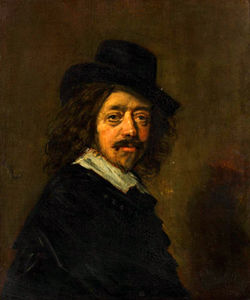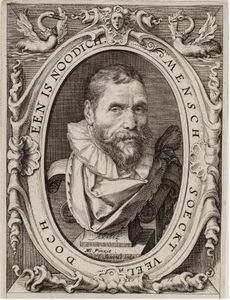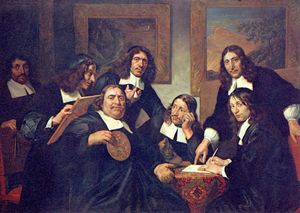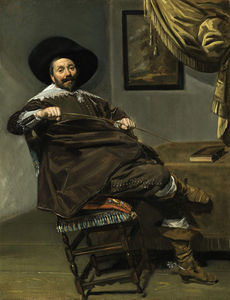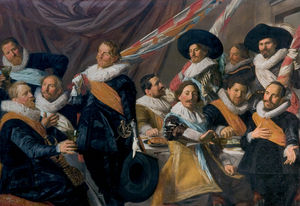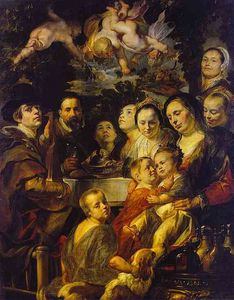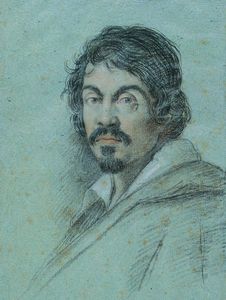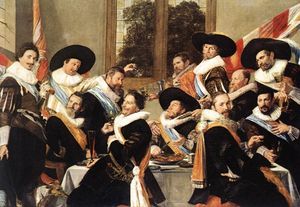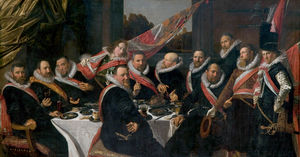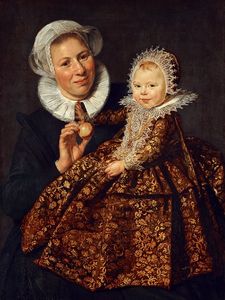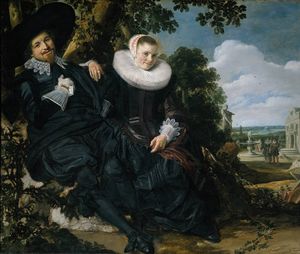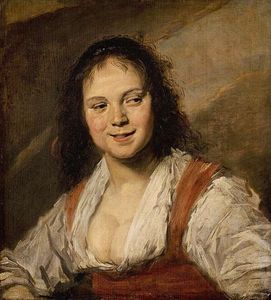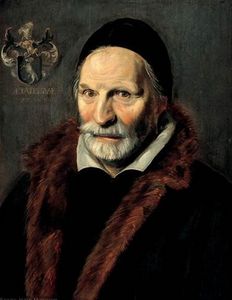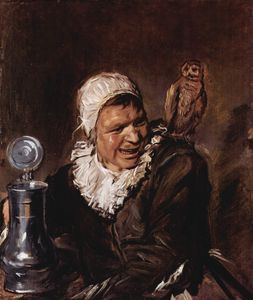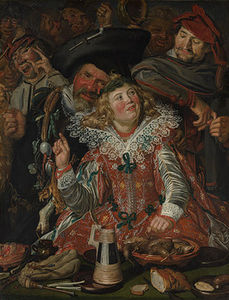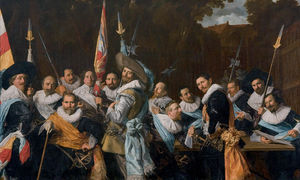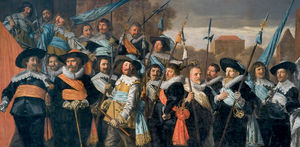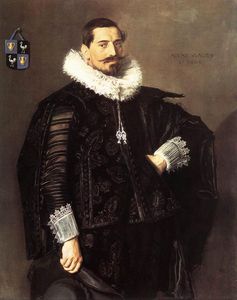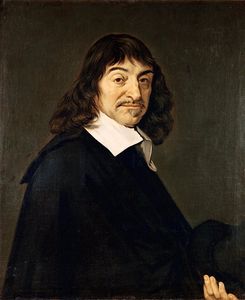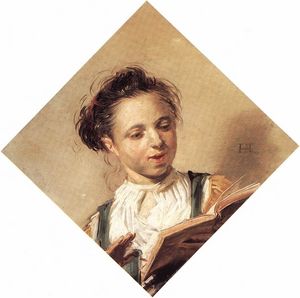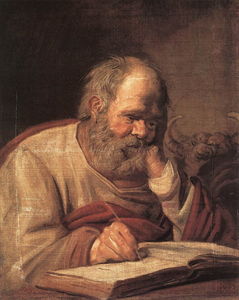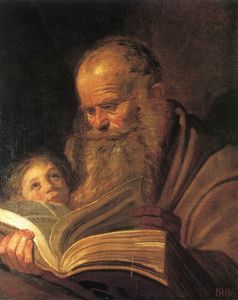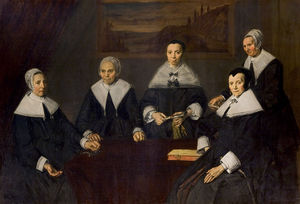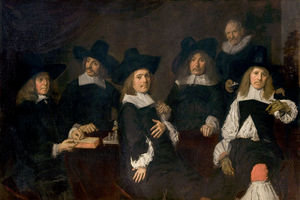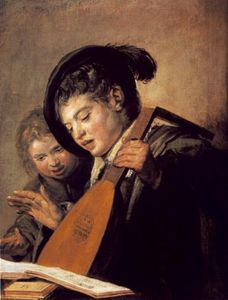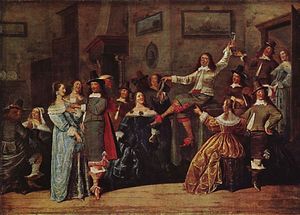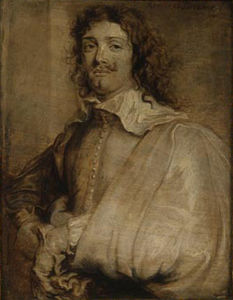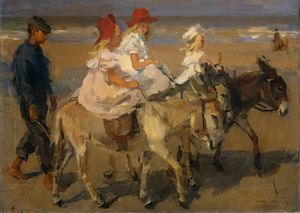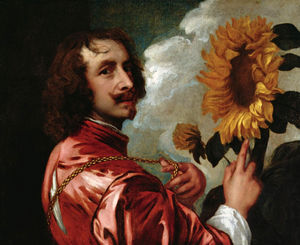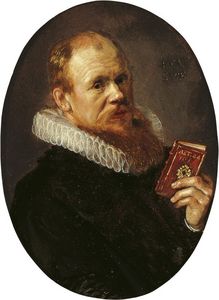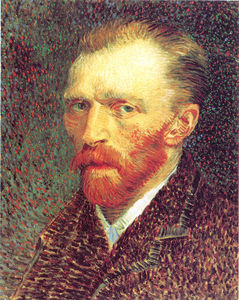Frans Hals
- Short Name:
- Hals
- Date of Birth:
- 1580
- Date of Death:
- 26 Aug 1666
- Focus:
- Paintings
- Mediums:
- Oil
- Subjects:
- Figure
- Art Movement:
- Baroque
- Hometown:
- Antwerp, Belgium
Introduction
Frans Hals was a revolutionary in the field of portraiture and used his color and paint brush to express ultimate freedom by breaking convention. Famed for his unique painting style and method of capturing light and atmosphere, he went on to influence many emerging artists and inspired the Impressionist movement some 200 years later.
Frans Hals Biography
Born in Antwerp, Belgium, in 1580, Hal's parents moved to the city of Haarlem to escape the Spanish invasion. Hals spent the rest of his life in Haarlem and established a lucrative career, gaining popularity for his unique approach to portrait painting.
Between 1600 and 1603 Hals studied under the artist and art historian Karel van Mander who was a fellow Flemish immigrant living in Haarlem. In 1600 Hals also became a member of the Guild of St. Luke in Haarlem at the age of 27 and his career went from strength to strength.
However, despite his success, Hals also experienced severe financial difficulties throughout his life, like so many fellow artisit. Married twice, he fathered ten children and with spiraling debts, he took up work as a restorer, art dealer and art tax expert for the city councilors in order to support his family and his career.
Hals completed a total of 300 paintings during his lifetime, the majority being large group portraits of wealthy members of Dutch society. His popularity was down to his stylistic oeuvre and free expression and also the fact that portraiture was in high demand during the Dutch Golden age. Hal's exciting creativity and painting style soon spread throughout the Netherlands and he influenced many artists during that time and beyond.
Frans Hals died in Haarlem on 26 August 1666 and was buried in St. Bavos Church. Four of Hal's sons followed in his footsteps and became painters and they worked to carry on his legacy but the failing market, change in tastes and civic wars made it very difficult to follow their father's success.
Frans Hals Style and Technique
Hals spent much of his time painting individuals and group portraits from all walks of life in his native Haarlem. In doing so he gave a very unique and clear perception of Dutch society during the 17th century.
The artist was most noted for his style and painting technique. He was a realist painter who would redefine the concept of realist painting in using free expression upon the canvas. He chose not only to paint what was in front of him but also what he felt about it.
Hal's various methods and brush techniques would convey this as he painted what he thought essential to the subject and what aspects would best capture their inner selves. His technique was close to impressionism in its looseness and he painted with increasing freedom as he matured.
As well as accentuating facial expressions, Hals would put his subjects into positions that created a sort of narrative. He would do this for his group portraits whereby each subject was depicted individually in order to capture the true spirit of the group.
Hals did not limit himself to the conventions of painting style and nor restrict his palette; he was fond of multi-layering and using various tones and hues to emphasize surfaces and add movement.
As the artist continued creating and defining new ways of expressing his subject matter and tweaking his painting style, his palette became darker and his colors started to have a measly impact on his paintings.
Hal's painting techniques and compositional methods would go on to be remembered and revived two centuries later.
Who or What Influenced Frans Hals
Hals drew inspiration from the world around him, notably people. He thrived on depicting people from all walks of life in his native Haarlem and his work provides a snapshot of Dutch society during the 17th century.
Hals established a strong reputation as an artist who fully understood his subject and knew them intimately. He did not paint what was in front of him but rather his perception of it. He was able to capture the essence of his subject matter and was a master in creating interaction between his characters.
Such competencies earned him a great deal of work. He completed a total of 300 paintings in his lifetime and the majority were commissioned portraits for the wealthy residents of Haarlem.
Karel van Mander:
Despite studying under the Flemish painter Karel van Mander, there is not a great deal of evidence of his influence in Hals' work. Many believe that Hals' paintings were only surpassed by those of Rembrandt, his younger contemporary. It's likely that Rembrandt drew inspiration from Hals, particularly with his handling of group portraits.
From the beginning, however, Hals's work conflicted with the typical mannerisms of van Mander. His early work is actually closer in spirit to that of Jacob Jordaens, who was an outstanding Baroque painter from Antwerp and a pupil of Peter Paul Rubens.
In fact, the good humor of Hals's popular scenes recalls the joyous gatherings painted by the contemporary Dutch followers of the earthy, sensuous Italian painter Caravaggio.
Family Life:
Hals enjoyed painting children as they are most susceptible to expressing their true selves without inhibitions. Furthermore, as a father of 10, he had a happy family life and was believed to be religious and this no doubt impacted on his choice of subject matter.
Frans Hals Works
Frans Hals Followers
Frans Hals left behind a great legacy thanks to his artistic flair. Many Dutch schools went on to teach his work methods throughout the two centuries after his death and he was known as an artist who challenged conventional painting style within the Baroque era.
Four of Hal's sons also became artists and they attempted to carry on their father's legacy. They were: Harmen Hals , Frans Hals Junior, Reynier Hals, and Nicolaes Hals. His younger brother, Dirk Hals also decided to become a painter and was heavily influenced by his sibling.
During the middle years of his career, Hals opened up a studio and took on various students. The most noted were Judith Leyster and her husband Jan Miense Molenaer. Other pupils included Adriaen Brouwer, Adriaen van Ostade, Johannes Cornelisz. Verspronck and Bartholomeus van der Helst. It's also believed that Hal's sons and his brother Dirk worked under him in his private studio.
After death:
Like many painters whose style is original, Hals did not have many direct followers. Adriaen Brouwer was the closest, using Hals's techniques to depict tavern scenes and related subjects. For many years Hals was regarded as a somewhat limited painter who did not break away from portraits, meaning he had no place in the history of significant art.
It was not until the 19th century that there was a revival of interest in his work. His methods in tonal painting, stylistic content and creative execution resulted in a fanbase that lasted even beyond the Post-Impressionist era.
Hals influenced greats such as Manet with his free style and van Gogh with his soft palette. Other contemporary followers of his work include Charles-François Daubigny, Max Liebermann, Whistler and Courbet and Van Gogh.
In the Netherlands in particular, where Hals lived and worked, the artists Jacobus van Looy and Isaac Lazarus Israëls are just two examples of painters who have studied the work of Hals and attempted to develop his techniques.
In recent times Hals has been praised for being a serious and excellent realist painter.
Frans Hals Critical Reception
During life:
Hals set himself apart from his contemporaries by developing a revolutionary painting style and technique. He used the method of successive layering which was prominent at this time but he applied his underpainting very loosely and was adept at pulling back his hands from the image when necessary.
Unlike many of his contemporaries, Hals didn't overpaint his works in terms of their accuracy and diligence. Schematic painting was not invented by Hals as it was already in use in 16th century Italy. Furthermore, it's likely that Hals was inspired by Flemish peers such as Rubens and Van Dyck.
Nevertheless, in the 17th century Hal's first biographer, Schrevelius wrote that the artist demonstrated 'An unusual manner of painting, all his own, surpassing almost everyone. ' He added that Hals' works reflected 'such power and life' that the painter 'seems to challenge nature with his brush'.
After death:
Following his death and for the next two centuries the popularity of Hal's work dwindled and some of his paintings were sold at auction for only a few pounds or shillings.
Revived interest in Hal's work came about in the 19th century and his followers were mainly the Impressionists who regarded Hals as one of their predecessors.
Vincent van Gogh in a letter to his brother Theo wrote: 'What a joy it is to see a Frans Hals, how different it is from the paintings - so many of them - where everything is carefully smoothed out in the same manner. ' Hals was a unique artist because he did not give a smooth finish to his works as his peers did but instead portrayed the energy of his subject through the use of smears, lines, spots, large patches of color and few details.
Renewed interest in Hal's work resulted in many of his paintings significantly increasing in value at auction. Many were sold to American collectors, who were fans of Hal's uncritical attitude towards wealth and status.
The paintings of Frans Hals now hang in museums around the world and are often deemed the most valuable in the collection.
Frans Hals Bibliography
To read more about Frans Hals and his works please use the recommended reading list below.
• Baard, H. P. Frans Hals (Library of Great Painters). Thames & Hudson Ltd. , 1981
• Davies, Gerald. S. Frans Hals. George Bell and Sons, 1902
• Ekkart, Rudi & Buvelot, Quentin. Dutch Portraits: The Age of Rembrandt and Frans Hals. National Gallery Company Ltd. , 2007
• Grimm, Claus. Frans Hals: The Complete Work. Harry N. Abrams, Inc. , 1990
• Kernan, Michael. The Lost Diaries of Frans Hals: A Novel. Saint Martin's Press, 1995
• Slive, Seymour. Frans Hals. Alan Wofsy Fine Arts, 1989
• Trivas, N. S. The Paintings of Frans Hals. George Allen and Unwin Ltd; First Edition edition 1941

